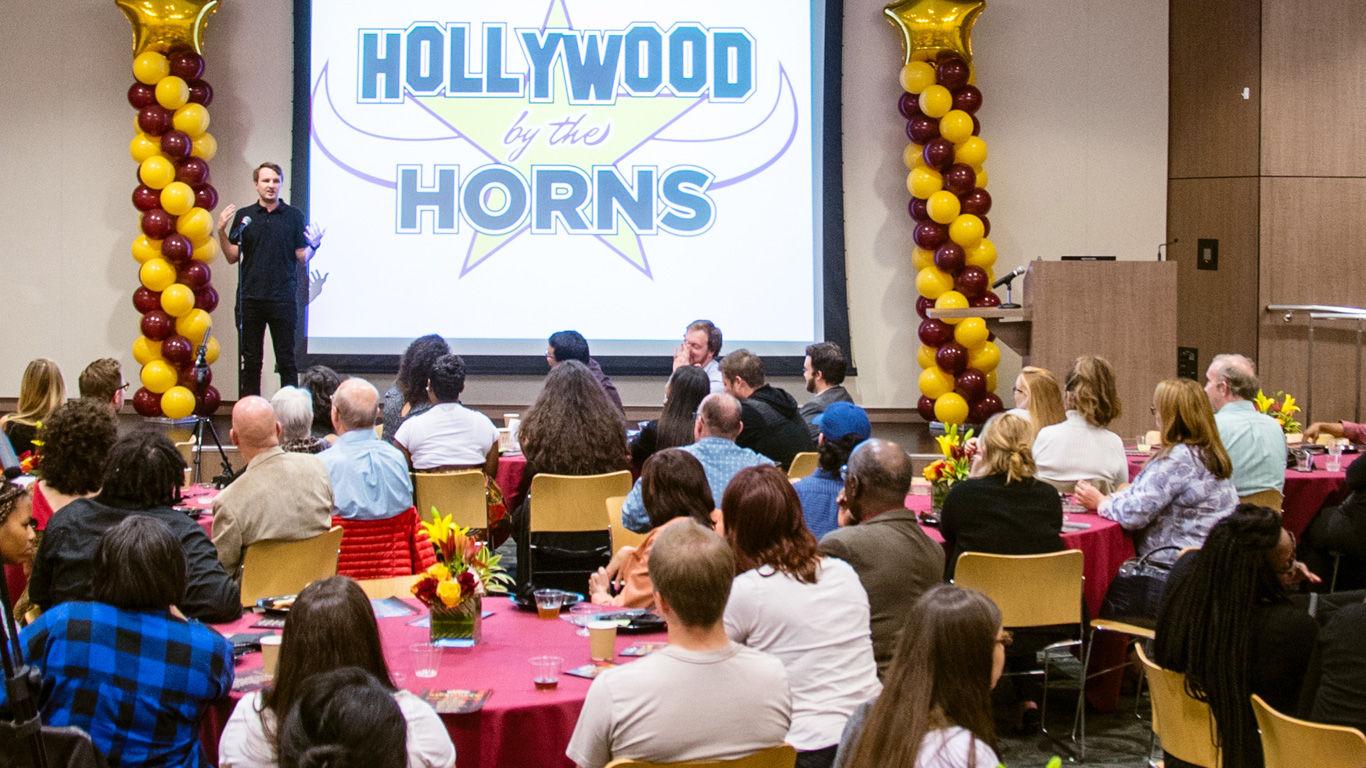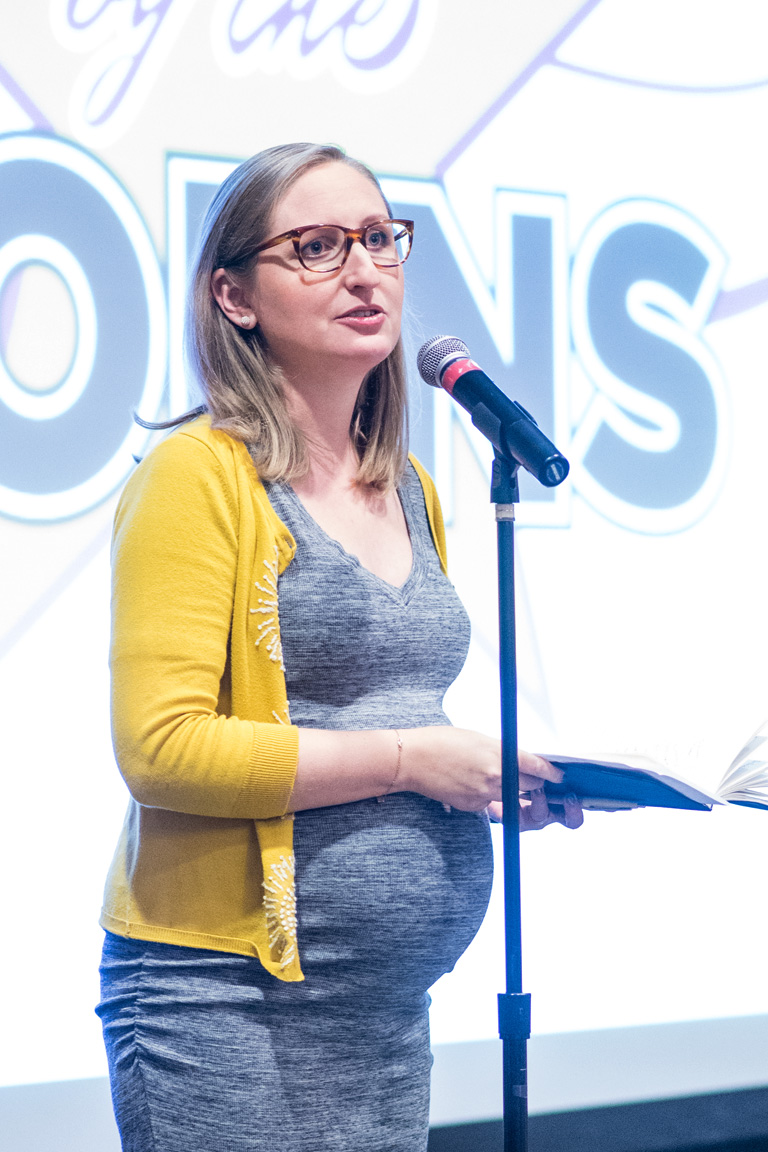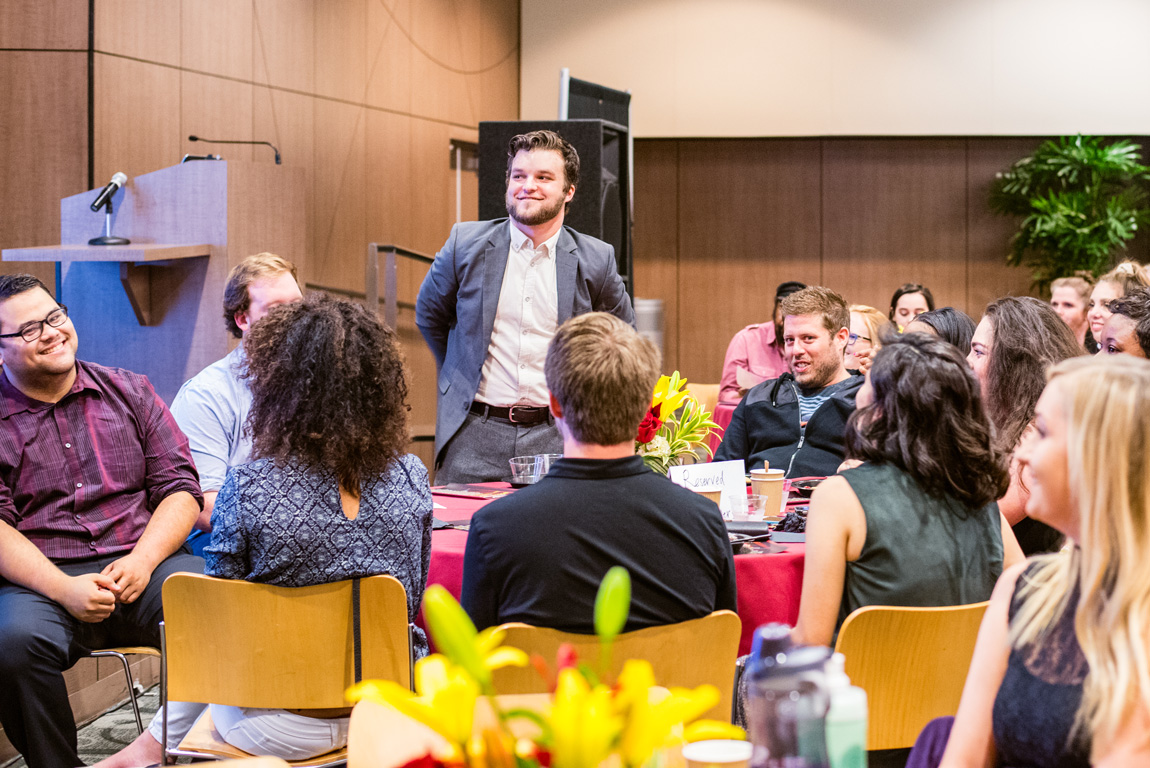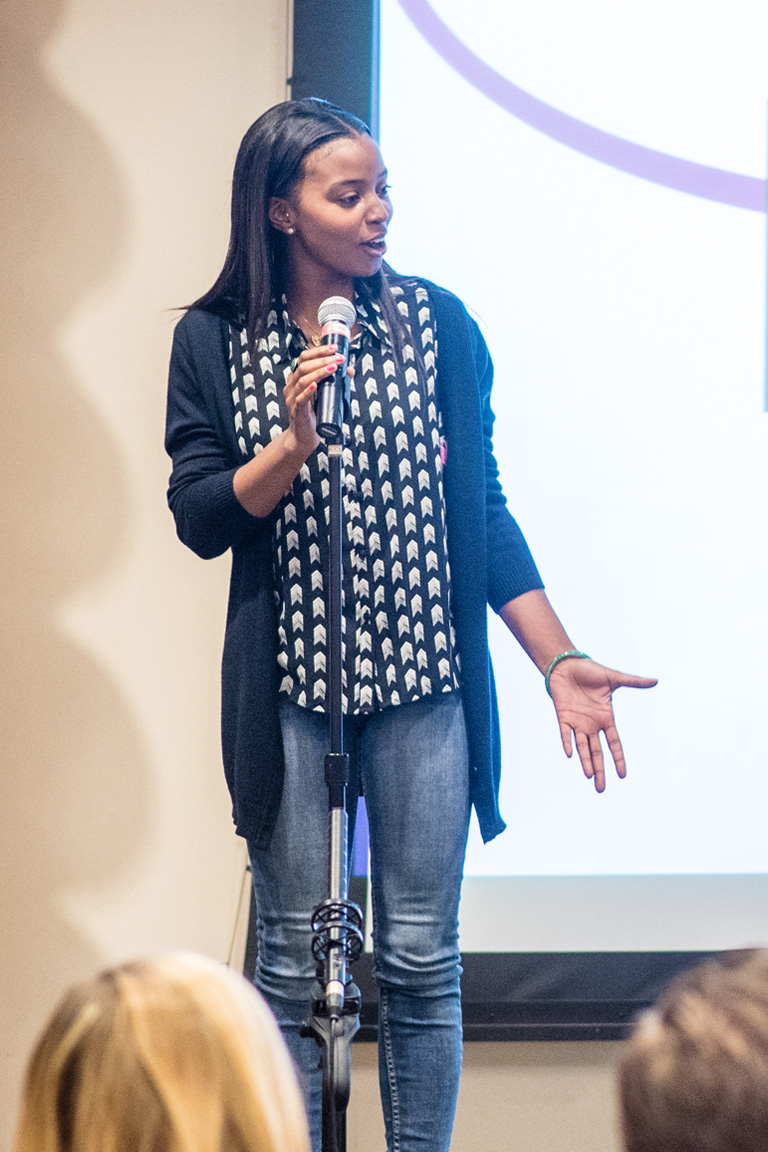
Fearlessly stepping up to the microphone without notes and in front of a live audience, 15 California State University, Dominguez Hills (CSUDH) students and two alumni shared dramatic, funny, and tear-jerking personal stories from their lives during the Hollywood by the Horns 2nd Annual “Story Slam” on May 7 in the Loker Student Union ballroom.

To prepare for the Story Slam, the student participated in two workshops, “Finding Your Voice and Telling Your Story,” created to develop their verbal communication and storytelling skills through an examination and sharing of personal experiences, and “Deconstructing the Entertainment industry.” Each week throughout the spring 2016 semester, guest speakers working in the entertainment industry came to the latter workshop to share personal stories about their paths to success.
The guest lecturers’ work ran the gamut of career possibilities in the industry, such as production and set design, screenwriting, music supervision, and they held such positions as talent agents and studio executives.
“This program has been so wonderful for me,” said Ryan Bowles Eagle, assistant professor of communications at CSUDH. “Just watching students begin to build relationships with mentors is special. They [the industry professionals] get to come here and meet our students and see what makes them so special, and see what they may have to contribute to all the creative positions out there in the entertainment industry.”
The Hollywood by the Horns program was launched by Eagle and Lisa Callamaro, owner of the Lisa Callamaro Literary Agency, in 2015 as a pilot program with the mission to “build up and maintain meaningful relationships between working professionals in Hollywood, and the dynamic students at Cal State Dominguez Hills,” explained Eagle.
Student Claudia Uballez shared a story about how communication “didn’t really exist” in her family when she was growing up, except when her father, the “dictator,” lectured the family. The result was her inability to have constructive two-way communications throughout her life, and with her husband who she called her “voice of reason.”

“We [she and her husband] got into an argument and I did what I knew how to do–I ran into the bedroom and locked myself in to avoid the talk,” said Uballez. “[During another argument] he cornered me in this tiny little restroom. I was like an enraged lion who wanted to fight. I didn’t know what to do. I couldn’t get away. Then, all of a sudden, out of desperation I said, ‘I hate you!’ I never knew that three little word could cause so much hurt and pain to a person. He was standing there hurt and broken…It was then that realized I had to get my… together.”
Storytelling helps students address a variety of communication issues, such as Uballez’s. When a person is told a story “in a specific way,” his or her brain and body chemistry “literally connects” with another person, according to Callamaro.
“We are able to change people’s points of view [when telling a story], and that can literally be measured to what choices they will make,” said Callamaro.
“So what is voice? It is a unique expression of your most authentic self, and that is your experience, your set of beliefs, and your values,” Callamaro added in reference to the “Finding Your Voice and Storytelling” workshop. “That can be expressed in many ways; in sculpture, in poetry and song, in building furniture, and from how you run your business to how you raise your children.”

During the spring 2016 semester, the story-slamming students wrote personal mission statements to help them “dig into who they are and what their voices are” for the Story Slam, according to Eagle, who switched back-and-forth with Callamaro to read each mission statement, while the students stood up in the audience.
There was Tommy Still, whose mission was to “engage, appreciate, and understand his surrounding community to better service creativity,” while Samantha Espinoza’s mission was to “educate, promote and support community development in underprivileged cities.”

Later, when it was student storyteller Jaszi Stephens’ turn to get behind the microphone, she reminisced about how her grandmother “was everything” to her and her sisters–the “rug beneath” their feet. She recalled a time when she had been hiding a tattoo on her foot from her “Granny” for two years, until the day she was getting ready for her high school prom and her secret was exposed. Her grandmother “broke the silence” by saying, “Jaszi, did someone draw on you?“ even though she knew exactly what it was.
Stephens then shared how she “broke another of Granny’s rules” by driving her car “alone for the first time” to Oakland, all the while rehearsing in her mind what she would tell her grandmother when she got there.
“This whole time I was wondering what she would say–what her response would be. I was eager. I actually wanted her to yell at me. But the truth is, I never got to hear her response. She had passed away from her six-month battle with cancer,” said Stephens. “While growing up, when I broke Granny’s rules, she always accepted me, and although she wasn’t there to tell me so [when she got to Oakland], I knew I would still always be ‘Granny’s girl.’”